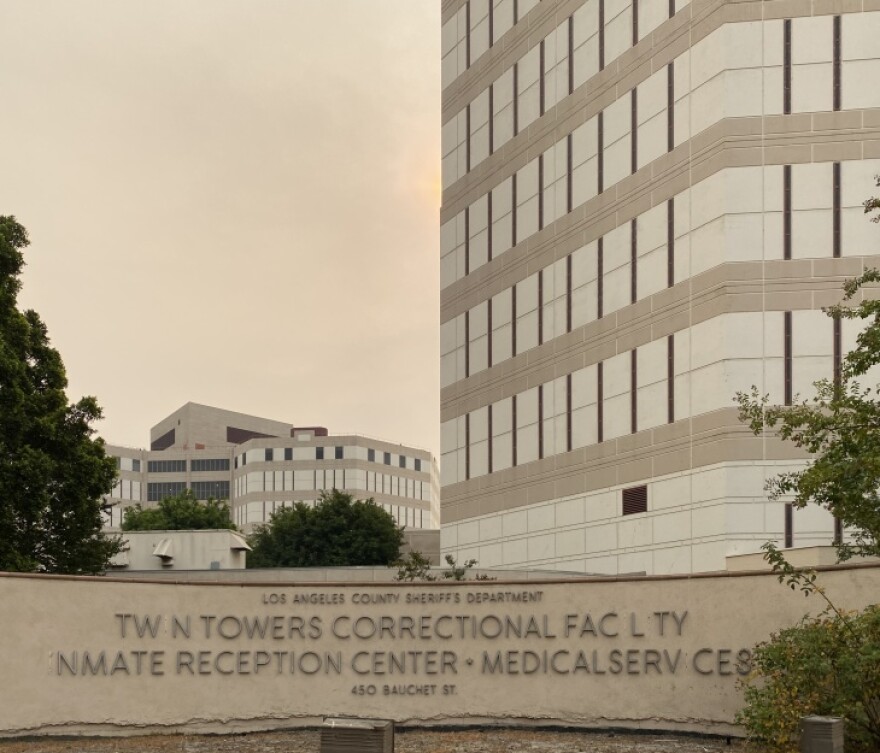Truth matters. Community matters. Your support makes both possible. LAist is one of the few places where news remains independent and free from political and corporate influence. Stand up for truth and for LAist. Make your tax-deductible donation now.
People In Psychiatric Distress Were Shackled For Multiple Days At LA County Inmate Reception Center

Conditions for some of the mental health population at L.A. County’s Inmate Reception Center were particularly bad last month, according to the Office of the Inspector General.
Assistant Inspector General Cathleen Beltz told the Sheriff Civilian Oversight Commission last week that she investigated after receiving a tip about overcrowding within the IRC. She said she discovered that on Aug. 22, there were 22 “front bench” patients — people who come in with psychiatric distress or drug or alcohol intoxication or withdrawal — who had been tethered with handcuffs and chains for nearly 24 hours while waiting for a bed.
Beltz found one patient had been shackled for two-and-a-half days.
Commissioner Lael Rubin called the situation “horrific.”
Assistant Sheriff Brendan Corbett said the conditions were an anomaly, blaming a spike in COVID-19 cases that required more room for quarantining and a plumbing “crisis” at Men’s Central Jail that briefly prevented the department from opening up medium observation housing.
“This was 100% driven by COVID,” Corbett said.
Beltz agreed that COVID-19 exacerbated the situation. But, she added, “It is also true ... that long wait times in the IRC — especially for the mentally ill — are not new.”
Part of the problem is that the number of people with mental health disorders incarcerated in L.A. County jails continues to go up.
“[There are] so many people with mental health disorders in the jail — growing — and then so many people stuck in the Inmate Reception Center, unable to move through the jail system,” said Kristen Ochoa, Medical Director for L.A. County’s Office of Diversion and Reentry. “It’s all because the jail, in and of itself, is overcrowded,” she added.
As of Tuesday, Ochoa said the jail mental health population was at 6,013 — about 40% of the total number of incarcerated people.
Even as the overall jail population was reduced to mitigate the spread of COVID-19, the mental health population increased. Ochoa said that between 2012 and 2018, people with mental health issues made up 30% or less of the overall jail population.
“This is really sad,” Ochoa said, letting out a sigh.
The county plans to tear down the nearly 60-year-old Men’s Central Jail and replace it with increased mental health treatment options. A 145-page proposal prepared by the County Office of Diversion and Reentry lays out a three-pronged strategy that includes diverting about 4,500 people with mental health issues out of jail and investing “significantly” in beds and services within the community.








